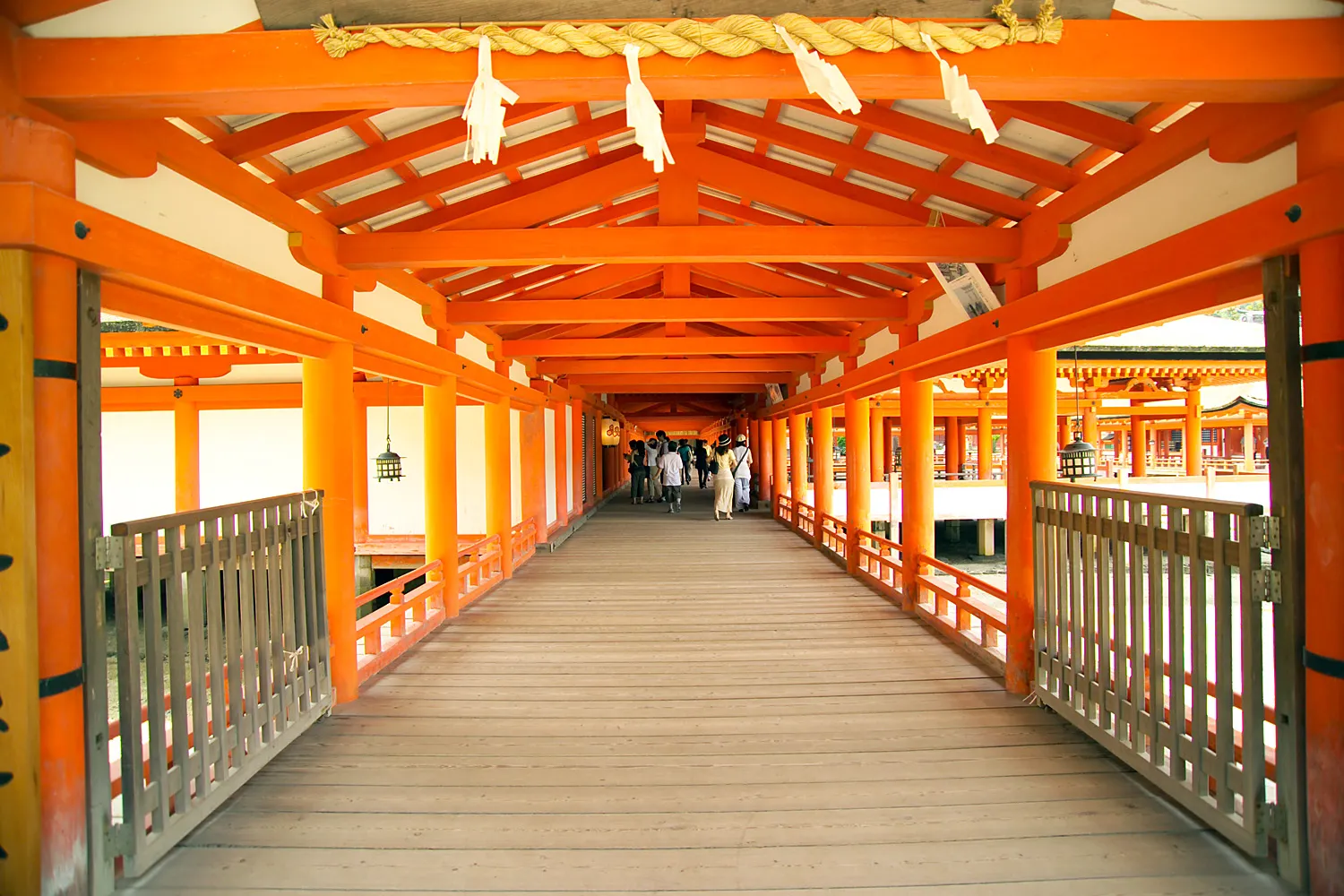

East Corridor / Itsukushima Shrine
The “East Corridor” of Itsukushima Shrine is a corridor that, like the other buildings, is beautifully designed in harmony with nature. The East Corridor is not a corridor that encloses the site in a rectangle, as is usually the case at shrines, but rather serves to connect each building on the sea to the land. It is about 81 meters long and has a complex shape with several bends. It begins at ground level, passes between the Hakushi-jinja Shrine's purification hall and the worship hall, and then turns three times at right angles before connecting to the east face of the main purification hall. The design of this corridor goes beyond its mere function as a passageway, creating a unique spatial beauty as part of the architecture of the maritime shrine. Structurally, the corridor is characterized by the use of funa-hijiki for the framework and the rainbow beams that cross the corridor in the beam-to-beam direction. The girder is supported on the rainbow beam by a “sasu,” which is supported by a boho-jimki on the sasu. The floorboards have gaps to allow water pressure to escape during high tides. This type of structure enhances the beauty of the shrine architecture while also providing practicality as a maritime structure. Historically, many munafuda (wooden fuda) remain in the east corridor, indicating that it was constructed sequentially from the end of the Muromachi period to the Momoyama period. Later, around the end of the Meiji period, the floorboards were replaced and protective boards were added to prevent wear and tear. In this way, the East Corridor has been maintained throughout its long history, while still offering its beauty to many people to this day.